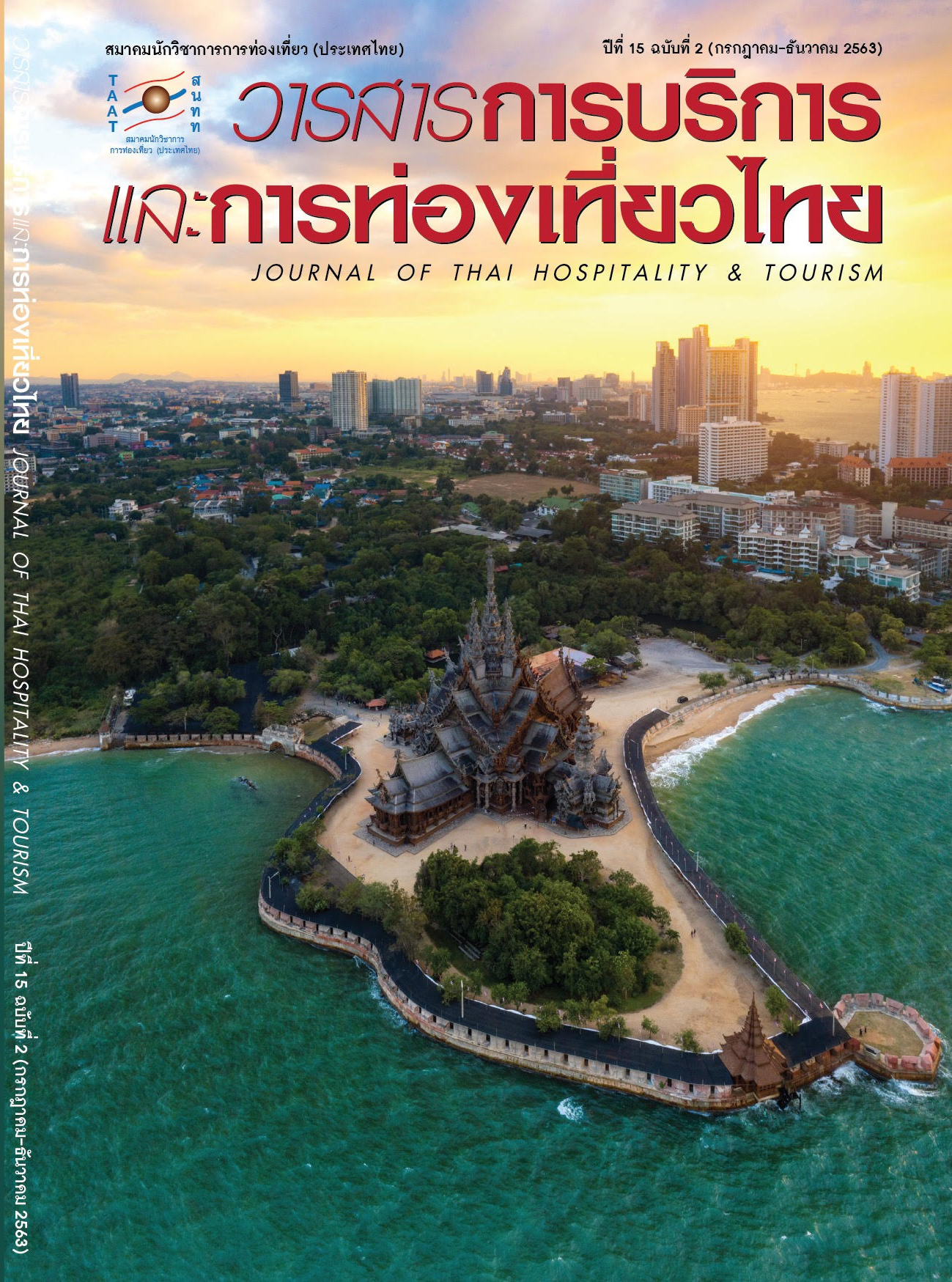The Tourism Image of Sa Kaeo Province as Frontier Tourism Destination
Main Article Content
Abstract
This research is a mixed methods research. It is designed to study the tourism image of Sa Kaeo province as frontier tourism. The sample consists of 400 Thai tourists travelled to Sa Kaeo province. Questionnaires and interviews are tools employed to collect data. The results from both techniques are statistically analyzed in order to find mean (), standard deviation (S.D.), content analysis, and the test value “t” (t-test) in order to compare the tourism image of Sa Kaeo province between male and female. One-way analysis of variance: ANOVA was used to compare the tourism image of Sa Kaeo province among Thai respondents by age interval. The research results are as follows:
1. The natural resources image was the best tourism image type in the eye of the visitors visiting Sa Kaeo province (= 3.70, S.D. = 0.796), followed by the cultural history and art image (
= 3.71, S.D. = 0.714) respectively.
2. Comparison tourism image of Sa Kaeo province of Thai respondents by gender, there was no significant difference between males and females at 0.05 levels.
3. Comparison tourism image of Sa Kaeo province of Thai respondents by educational interval, there was a significant difference at .05 levels in the political and economic image and social environment image.
Article Details
References
Delegation of the European Union to Thailand. (2017). Thailand’s Border with its Neighbours. Retrieved April 24, 2017, from https://eeas.europa.eu/delegations/thailand/index_th.htm
Jareerat Daosuay. (2012). A Comparison of Satisfaction and Tourists’ Attitudes towards Tourism Products, Attraction Image, and Their Traveling Behavior between Pattaya and Huahin. Journal of Thai Hospitality and Tourism, 7(2), 57–68.
Nunnally, J. C. & Bernstein, I. H. (1994). Psychometric Theory. 3rd ed. New York: McGraw-Hill.
Parama Satawatin. (2003). Principles of Communication Arts. Bangkok: Chulalongkorn University.
Rovinelli, R. J. & Hambleton, R. K. (1977). On the Use of Content Specialists in the Assessment of Criterion-referenced Test Item Validity. Dutch Journal of Educational Research, 2(1), 49–60.
[Sakaeo Provincial Center. (2016). Strategic Plan of Sa Kaeo Province. Retrieved July 18, 2017, from
https://www.sakaeo.go.th/strategy/plan_strategy.php.
Sakaeo Provincial Center. (2016). Sa Kaeo Province Development Plan (2018 – 2021), Retrieved May 8, 2017, from https://www.sakaeo.go.th
Swarbrooke, J. & Horner, S. (1999). Consumer Behavior in Tourism. New Delhi: Butterworth-Heinemann.
Wanna Wongwanit. (2003). Tourism Geography. 2nd ed. Bangkok: Wirat Education.
Wiwat Jankingthong. (2014). Destination Image in Thailand. Silpakorn University Journal, 34(1), 31–50.
Yamane, T. (1973). Statistic: An Introductory Analysis. Tokyo: Harper International Edition.


